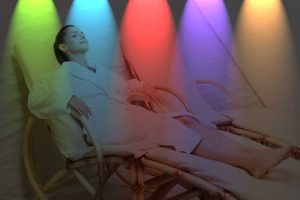Whether you have the winter blues, a more serious illness, or even just want to feel more energetic and rested, light therapy may be the answer.
Light therapy is one of the most studied natural treatments of modern times. Scientists and medical researchers have made many new discoveries about how the simple power of light can help treat diverse symptoms ranging from the irritated skin of eczema to “sundowning” that occurs in those with dementia or Alzheimer’s disease. In addition, this innovative therapy can improve performance, help you sleep better and even hold off the effects of aging.
The Importance of Light
We all know that most plants need light to survive, but many people are unaware that humans are just as dependent on the cycles of the sun. Our eyes sense light levels and adjusts our hormone levels to accommodate the time of day that it perceives. In turn, this serves as a cue to cells about when to perform crucial activities such as DNA repair and cell division.
While our bodies have natural internal circadian clocks that tick along regardless of external cues, relative levels of light and darkness are important in synchronizing your body with the external environment. A lack of light, or even exposure to the wrong wavelengths of it, can cause important cell processes to become dysregulated, leaving you at high risk of both minor and major disease. Light therapy can help to wake up your brain and body, giving your cells the clear timing cues that they need to run most effectively and efficiently.
Uses of Light Therapy

In modern times, different colors and wavelengths of light are used to treat a wide range of diseases. Light therapy can be used to treat eczema, psoriasis, acne vulgaris, circadian sleep disorders, depression and seasonal affective disorder, to name a few. In addition, it can be used to help people stay more awake and alert, increase how well students perform in classes, raise libido and even slow the signs of aging. Our bodies also heal more quickly when exposed to light, so this kind of therapy can be used to improve wound healing.
Getting the Light You Need for Optimal Health

Chronobiology research suggests that getting the right amounts of light and dark at the right times is crucial to human health. If you often feel tired, sluggish or mentally foggy, there is a good chance that light therapy may improve your health and your quality of life immensely.







